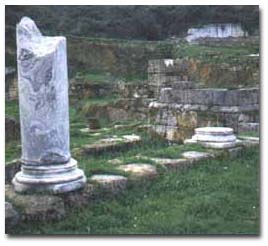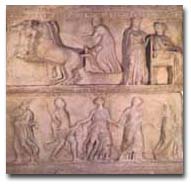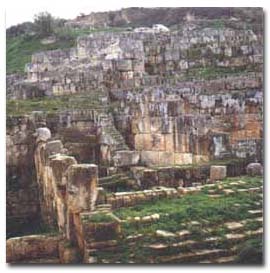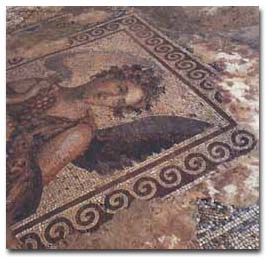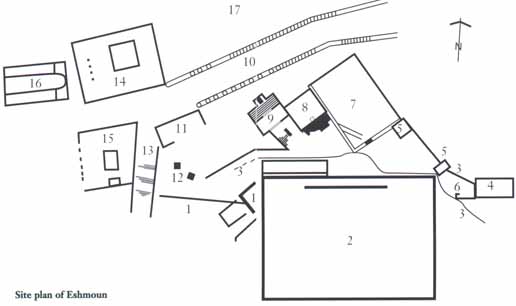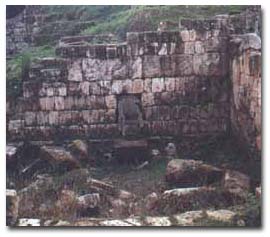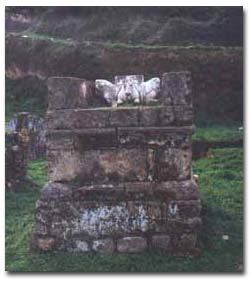
Aerial view of the site |
This Phoenician Temple complex, dedicated to the healing god Eshmoun, is the only Phoenician site in Lebanon that has retained more than its foundation stones. Building was begun at the end of the 7th century B.C. and later additions were made in the following centuries. Thus, many elements near the original temple site were completed long after the Phoenician era, including the Roman period colonnade, mosaics, a nymphaeun, and the foundations of a Byzantine Church. All of these buildings testify to the site’s lasting importance.
|


